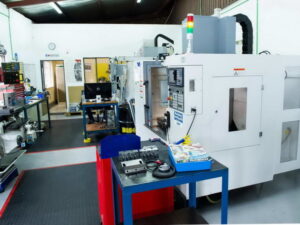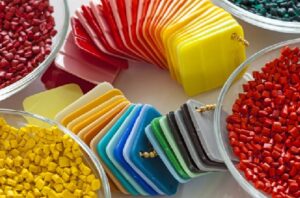
What are the effects of solid content of resin and role of additives in glue mix for making plywood
- मार्च 14, 2023
- 0
In making plywood, veneers are bonded in layers with adhesive where veneers are coated with glue in alternate layer(s). In the adhesive mix, it is the backbone resin which joins veneer layers face to face. Resin polymer penetrates partly into veneer through porous surface on either sides of the mating surfaces and also forms a uniform thin layer of adhesive between two surfaces as the resin cures during hot pressing.
Resin, after curing, becomes irreversible, hard mass and holds the veneers rigidly so that the veneer in the panel composite remain in place after hot pressing.
There is minimum and maximum limit of solid backbone resin covering per unit area to form adequate bonding. Too less resin will not be able to cover and form a uniform layer between the two mating surfaces after penetration into veneer on either sides- leading to poor bonding.
With higher application of glue, the excess will partly squeeze out during pressing. Excess resin along with solvent (water) will need more hot press time to get cured.
As a thumbs rule, 300-320 grams of resin per square meter of double glue line has been found to give adequate bond in plywood (quantity varies little with variation in thickness of veneer).
Diluting the resin /glue mix with water will lead to lesser quantity backbone resin per unit quantity of glue mix.
Firstly it will lead to poor bonding due to lesser quantity of resin per unit area of glue line if the coverage remains same. The reason has been explained in earlier para.
Secondly, water used in diluting will be there in the glue line in excess which will not be evaporated fully during the scheduled period of hot pressing and will remain trapped within the panel forming blister. Excess water in glue line will need extra time for the resin to cure, and if not allowed, bond will be poor.

Chemical Various Additives: Various additives are added to backbone resin to improve the functional properties of glue mix. Except fortifier, these additives has very little or no role in ultimate bonding of veneer in plywood.
Extender: These are substances added to glue mix either to reduce the cost of glue mix or to reduce penetration of resin through veneer or both. Extender may be cellulosic, amylaceous, proteinous and inorganic material. Usually extender is meant to do any or all these functions – maintaining uniform viscosity of glue mix during application of glue on veneer, enhance pot life of glue mix, helps in spread of specific quantity solid without excessive dripping or squeeze out.
Filler: Main function of filler when added to glue mix is to retard excess penetration of resin into porous veneer. Fillers also improve working properties of glue compared to pure resin i.e., filler added glue mix behaves better on roller spreader and helps in obtaining thin and uniform spread. Filler of inorganic origin serve partial gap filling properties.
Plasticizer: These are substances of high boiling liquid or low melting solid added to glue mix to increase their flexibility and workability of the dried film of resin polymer. In addition, they also lower the minimum film forming temperature of the adhesive. Polyvinyl acetate is an example.
Tackifyer: These are substances when added to resin or glue mix, improves the tackiness of the resin or glue. They are either resin polymer or viscosity building natural material. Polyvinyl alcohol, guar gum belong to this group.
Glue line poison: These substances have no relation with bonding, but added through glue mix on veneer to protect veneer, and ultimately plywood, from bio-degradation.
Accelerator: Substances of these class when added to glue mix helps to shorten the curing time of the resin under the same hot press condition. Among natural material tannin is added to phenolic resin to reduce the curing time of resin in the hot press.
Scavenger: Substances of this nature when added to glue mix helps in reducing formaldehyde emission from panel products. Examples are melamine added to urea formaldehyde resin, tannin/lignin added to phenolic resin reduce formaldehyde emission from plywood bonded with these resins.
Fortifier: The durability of an adhesive may be improved by adding a small quantity of more durable adhesive or a component of the resin to an inferior adhesive. The addition of melamine or melamine formaldehyde to urea formaldehyde and resorcinol formaldehyde to phenol formaldehyde are examples of fortification of less durable resins. However the fortified resin does not become as good as better one.
Catalyst and hardener: A catalyst is a substance which control chemical changes in other bodies without undergoing any changes within itself. Hardener also brings chemical changes in other bodies but undergoes chemical changes of itself. Addition of ammonium chloride (hardener) to urea formaldehyde based glue for fast curing of resin is an example.
Solvent: Solvents are usually added to resin to dilute the resin. If a resin shows tendency of lower solubility in the solvent it is being made and stored, then a solvent where it is more soluble or show stability, is added to the resin for storing for a longer period. Addition of methanol in melamine formaldehyde resin for longer storage is an example.
प्लाईवुड बनाने के लिए ग्लू मिश्रण में रेजिन की ठोस मात्रा और एडिटिव्स की भूमिका क्या हैं
प्लाईवुड बनाने के लिए विनियर को वैकल्पिक परतों में ग्लू के साथ लेपित किया जाता है, और एडहेसिव के साथ परतों में जोड़ा जाता है। जहां चिपकने वाले मिश्रण (एडहेसिव) में, मूलतः रेजिन ही है, जो विनियर की परतों को आमने-सामने जोड़ता है। पॉलीमर रेज़िन आंशिक रूप से मेटिंग सतहों के दोनों ओर छिद्रयुक्त सतह वाले विनियर में प्रवेश करता है और दो सतहों के बीच एडहेसिव की एक समान पतली परत भी बनाता है जिससे रेज़िन हॉट प्रेसिंग के दौरान कठोर हो जाता है। रेज़िन, क्यूरिंग के बाद, अपरिवर्तनीय, कठोर द्रव्यमान बन जाता है और विनियर को मजबूती से पकड़ता है ताकि पैनल कम्पोजिट में विनियर हॉट प्रेंसिग के बाद अपनी जगह पर बना रहे।

पर्याप्त बंधन बनाने के लिए प्रति इकाई क्षेत्र को कवर करने वाली रेजिन में ठोस सामग्री मात्रा रेजिन की न्यूनतम और अधिकतम सीमा होती है। बहुत कम रेजिन दोनों तरफ के विनियर में प्रवेश के बाद दो मेटिंग सतहों के बीच परत को एक समान कवर करने और बनाने में सक्षम नहीं होगा- जिससे बॉनिं्डग खराब हो जाएगी।
ग्लू के उच्च प्रसार से प्रंसिग के दौरान अतिरिक्त ग्लू आंशिक रूप से तो बाहर निकल जाएगा। पानी के साथ अतिरिक्त रेजिन को पकने के लिए अधिक हॉट प्रेसिंग समय की आवश्यकता होगी।
सामान्य नियम के अनुसार, डबल ग्लू लाइन के प्रति वर्ग मीटर में 300-320 ग्राम रेजिन को प्लाईवुड में बंधन देने के लिए पर्याप्त पाया गया है (विनियर की मोटाई में भिन्नता के साथ मात्रा थोड़ी भिन्न होती है)।
रेजिन/ग्लू मिश्रण को पानी के साथ पतला करने से ग्लू मिश्रण की प्रति यूनिट मात्रा में मूल रेजिन कम मात्रा में हो जाएगा।
सबसे पहले यह ग्लू लाइन के प्रति यूनिट क्षेत्र में रेजिन की कम मात्रा के कारण यदि कवरेज समान रहता है तो खराब बॉनिं्डग का कारण बनेगा। कारण उपरी पैरा में समझाया गया है।
दूसरे, मिश्रण में इस्तेमाल किया गया पानी ग्लू लाइन में अधिक मात्रा में होगा जो हॉट प्रेसिंग की निर्धारित अवधि के दौरान पूरी तरह से वाष्पित नहीं होगा और ब्लिस्टर बनाते हुए पैनल के भीतर फंसा रहेगा। ग्लू लाइन के अतिरिक्त पानी से रेजिन को पकने के लिए अतिरिक्त समय की आवश्यकता होगी, और यदि ऐसा नहीं किया जाता है, तो बंधन खराब होगा।
विभिन्न रसायनिक योज्यः ग्लू मिश्रण के कार्यात्मक गुणों को बेहतर बनाने के लिए विभिन्न योजक को रेजिन में जोड़ा जाता है। फोर्टिफायर को छोड़कर, इन एडिटिव्स की प्लाइवुड में विनियर की अंतिम बॉनिं्डग में बहुत कम या कोई भूमिका नहीं होती है।
एक्सटेंडरः ये ऐसे पदार्थ हैं जिन्हें ग्लू मिक्स में जोड़ा जाता है या तो ग्लू मिक्स की लागत को कम करने के लिए या विनियर में रेजिन के प्रवेश को कम करने के लिए या दोनों के लिए। एक्सटेंडर सेल्युलोसिक, एमाइलेसियस, प्रोटीनयुक्त और अकार्बनिक पदार्थ हो सकता है। आमतौर पर एक्सटेंडर इनमें से कोई भी या सभी कार्य करने के लिए होता है – विनियर पर ग्लू लगाने के दौरान ग्लू मिक्स की एक समान गाढापन बनाए रखना, ग्लू मिक्स के घट जीवन (पॉट लाइफ) को बढ़ाना, अत्यधिक टपकने या निचोड़े बिना विशिष्ट मात्रा के ठोस के प्रसार में मदद करता है।
पूरकः ग्लू मिश्रण में मिलाने पर पूरक का मुख्य कार्य छिद्रयुक्त विनियर में रेजिन के अतिरिक्त प्रवेश को धीमा करना है। शुद्ध रेजिन की तुलना में पूरक ग्लू के कार्य गुणों में भी सुधार करते हैं, यानी, पूरक मिश्रीत ग्लू मिक्स रोलर स्प्रेडर पर बेहतर काम करता है एवं पतला और समान फैलाव प्राप्त करने में मदद करता है। अकार्बनिक मूल के पूरक आंशिक तौर पर छेद भरने वाले गुण भी प्रदान करते हैं।
प्लास्टिसाइज़रः ये उच्च उबलते तरल या कम पिघलने वाले ठोस पदार्थ होते हैं जिनको ग्लू मिश्रण में जोड़ा जाता है ताकि उसके लचीलेपन और रेजिन बहुलक (पॉलीमर) की सूखी परत की कार्य क्षमता को बढ़ाया जा सके। इसके अलावा, वे एडहेसीव की परत बनाने के न्यूनतम तापमान को भी कम करते हैं। जैसे पॉलीविनाइल एसीटेट इसका एक उदाहरण है।
टेकीफायर: ये वे पदार्थ हैं जिन्हें जब रेजिन या ग्लू मिश्रण में जोड़ा जाता है, तो ये रेजिन या ग्लू की चिपचिपाहट में सुधार करता है। वे या तो रेजिन पॉलीमर होते हैं या गाढेपन का निर्माण करने वाली प्राकृतिक सामग्री। पॉलीविनाइल अल्कोहल, ग्वार गम इस समूह के हैं।
जहरीली ग्लू लाइनः इन पदार्थों का बॉनिं्डग से कोई संबंध नहीं है, लेकिन विनियर और अंततः प्लाईवुड को बायो-डिग्रेडेशन से बचाने के लिए विनियर पर ग्लू मिक्स में मिलाया जाता है।
गतिर्द्वकः इस वर्ग के पदार्थ, ग्लू मिश्रण में जोड़े जाने पर उसी हॉट प्रेसिंग स्थिति के तहत रेजिन के पकने के समय को कम करने में मदद करते हैं। गर्म प्रेस में रेजिन के इलाज के समय को कम करने के लिए प्राकृतिक सामग्री में टैनिन वृक्ष की छाल से प्राप्त क्षार को फेनोलिक रेजिन में मिलाया जाता है।
अपमार्जनः इस प्रकृति के पदार्थ जब ग्लू मिश्रण में जोड़े जाते हैं तो पैनल उत्पादों से फॉर्मलाडेहाइड उत्सर्जन को कम करने में मदद मिलती है। उदाहरण हैं मेलामाइन को यूरिया फॉर्मेल्डिहाइड रेजिन में मिलाया जाता है, टैनिन/लिग्निन को फेनोलिक रेजिन में मिलाया जाता है, इन रेजिन के साथ बंधे प्लाईवुड से फॉर्मेल्डिहाइड उत्सर्जन कम हाता है।
फोर्टिफायरः थोड़ी मात्रा में अधिक टिकाऊ एडहेसिव या रेजिन के एक घटक को जोड़कर एक कमजोर एडहेसिव के स्थायित्व में सुधार किया जा सकता है। यूरिया फॉर्मेल्डिहाइड में मेलामाइन या मेलामाइन फॉर्मल्डिहाइड और फिनोल फॉर्मल्डिहाइड में रेसोरिसिनॉल फॉर्मल्डिहाइड का योग कम टिकाऊ रेजिन के फोर्टिफिकेशन के उदाहरण हैं। हालाँकि फोर्टिफाइड रेजिन उतनी अच्छी नहीं होती है।
उत्प्रेरक और हार्डनरः एक उत्प्रेरक एक पदार्थ है जो अपने भीतर किसी भी परिवर्तन के बिना अन्य निकायों में रासायनिक परिवर्तनों को नियंत्रित करता है। हार्डनर अन्य निकायों में रासायनिक परिवर्तन लाता है लेकिन स्वयं के रासायनिक परिवर्तनों से भी गुजरता है। रजिन को तेजी से पकाने के लिए, यूरिया फॉर्मेल्डिहाइड आधारित ग्लू में अमोनियम क्लोराइड (हार्डनर) जोड़ना एक उदाहरण है।
सॉल्वेंटः सॉल्वैंट्स को आमतौर पर रेजिन को पतला करने के लिए रेजिन में मिलाया जाता है। यदि एक रेजिन साल्वेंट में कम घुलनशीलता की प्रवृत्ति दिखाता है जब इसे बनाया और संग्रहीत किया जा रहा होता है, तो एक विलायक को जहां यह अधिक घुलनशील होता है या स्थिरता दिखाता है, लंबी अवधि के भंडारण के लिए रेजिन में जोड़ा जाता है। मेलामाइन फॉर्मेल्डीहाइड रेजिन में मेथनॉल मिलाना लंबे समय तक भंडारण के लिए एक उदाहरण है।

































































